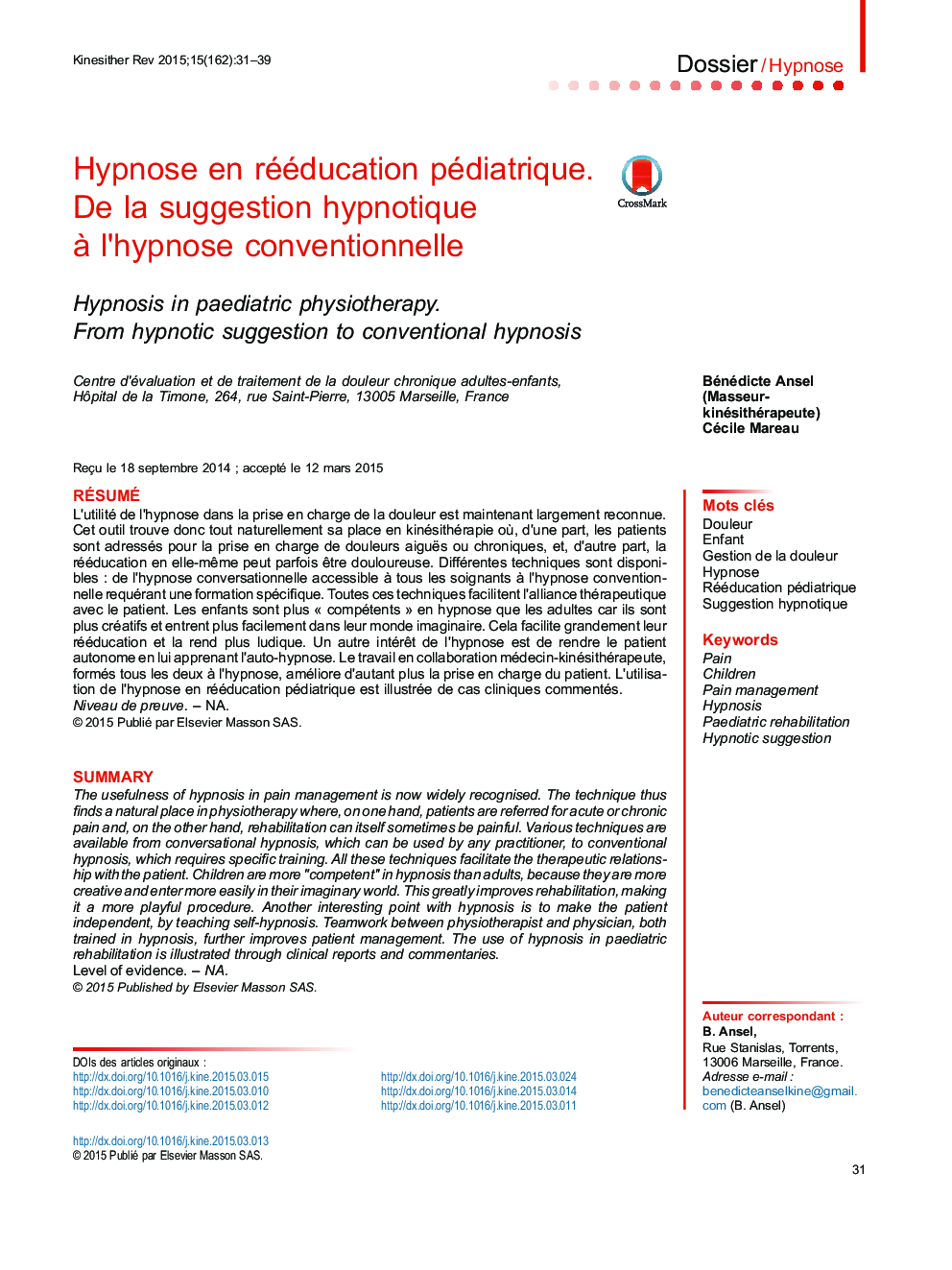| Article ID | Journal | Published Year | Pages | File Type |
|---|---|---|---|---|
| 2622363 | Kinésithérapie, la Revue | 2015 | 9 Pages |
RésuméL’utilité de l’hypnose dans la prise en charge de la douleur est maintenant largement reconnue. Cet outil trouve donc tout naturellement sa place en kinésithérapie où, d’une part, les patients sont adressés pour la prise en charge de douleurs aiguës ou chroniques, et, d’autre part, la rééducation en elle-même peut parfois être douloureuse. Différentes techniques sont disponibles : de l’hypnose conversationnelle accessible à tous les soignants à l’hypnose conventionnelle requérant une formation spécifique. Toutes ces techniques facilitent l’alliance thérapeutique avec le patient. Les enfants sont plus « compétents » en hypnose que les adultes car ils sont plus créatifs et entrent plus facilement dans leur monde imaginaire. Cela facilite grandement leur rééducation et la rend plus ludique. Un autre intérêt de l’hypnose est de rendre le patient autonome en lui apprenant l’auto-hypnose. Le travail en collaboration médecin-kinésithérapeute, formés tous les deux à l’hypnose, améliore d’autant plus la prise en charge du patient. L’utilisation de l’hypnose en rééducation pédiatrique est illustrée de cas cliniques commentés.Niveau de preuveNA.
SummaryThe usefulness of hypnosis in pain management is now widely recognised. The technique thus finds a natural place in physiotherapy where, on one hand, patients are referred for acute or chronic pain and, on the other hand, rehabilitation can itself sometimes be painful. Various techniques are available from conversational hypnosis, which can be used by any practitioner, to conventional hypnosis, which requires specific training. All these techniques facilitate the therapeutic relationship with the patient. Children are more “competent” in hypnosis than adults, because they are more creative and enter more easily in their imaginary world. This greatly improves rehabilitation, making it a more playful procedure. Another interesting point with hypnosis is to make the patient independent, by teaching self-hypnosis. Teamwork between physiotherapist and physician, both trained in hypnosis, further improves patient management. The use of hypnosis in paediatric rehabilitation is illustrated through clinical reports and commentaries.Level of evidenceNA.
